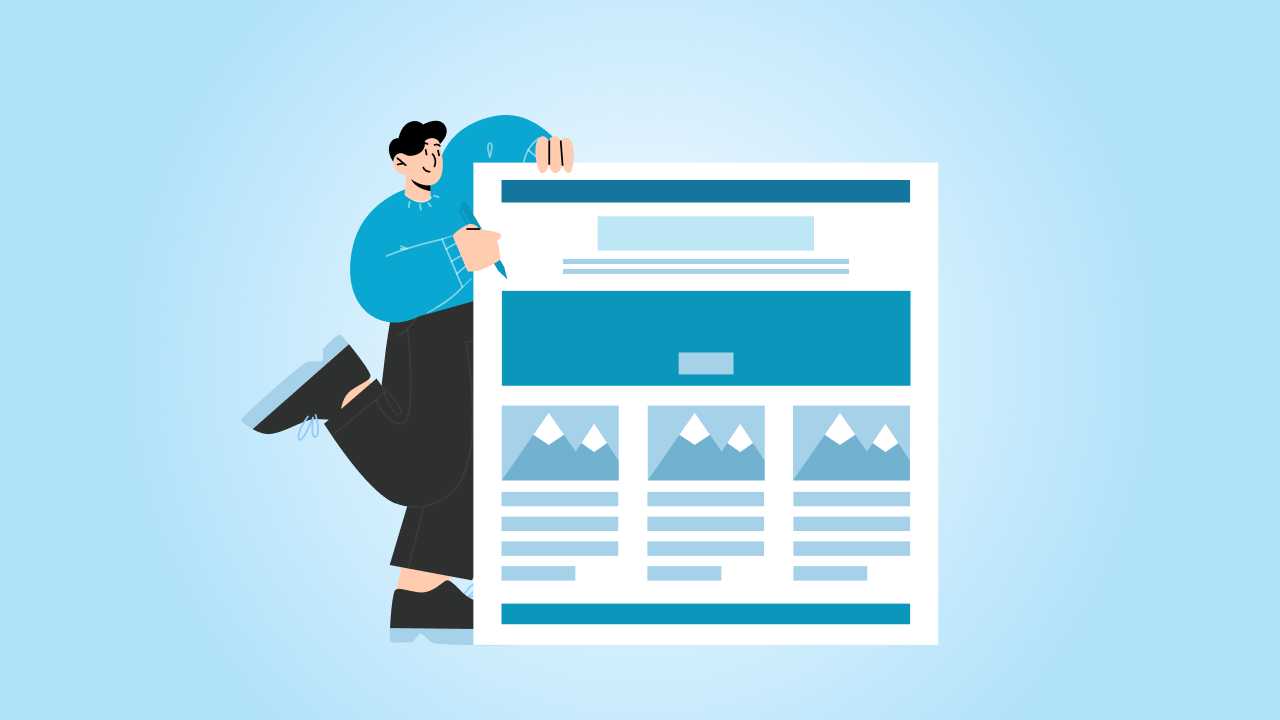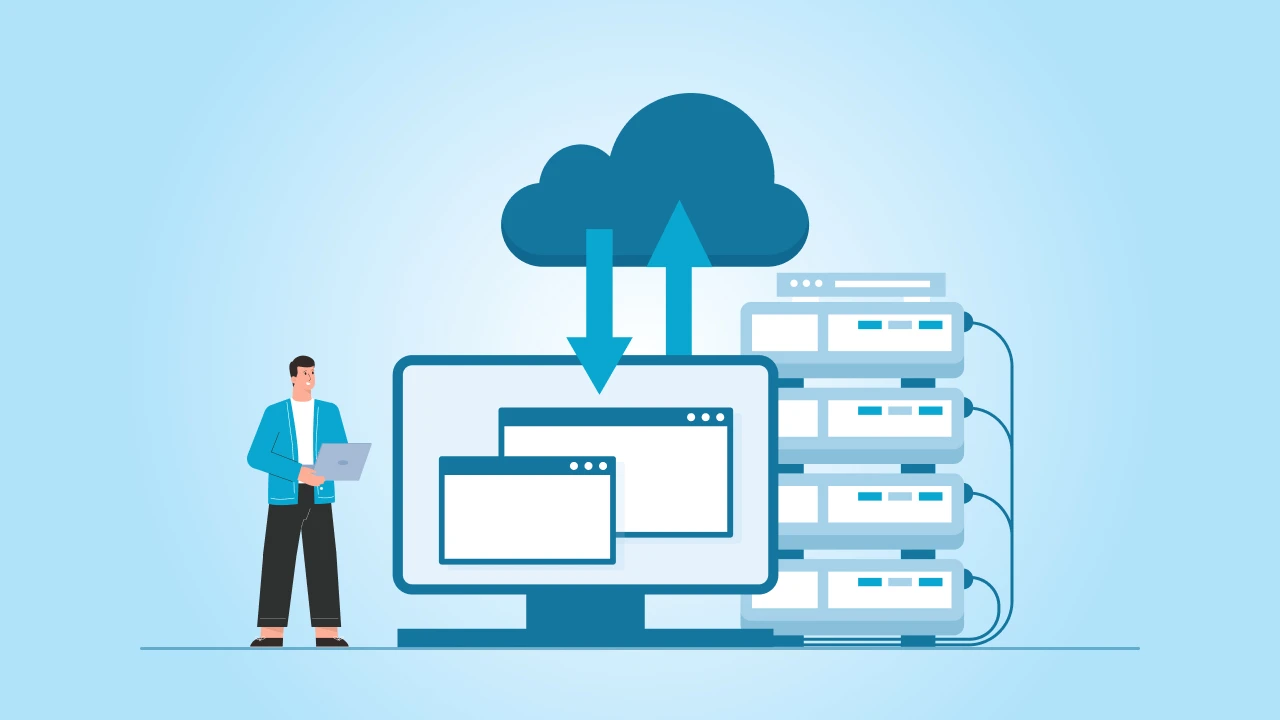If your website is still running on Drupal 8, it’s time to pay attention.
As Drupal 8 is no longer supported, continuing to use it could be literally welcoming security risks, performance problems, and compatibility issues to your website.
But here’s the good news: upgrading to Drupal 10 ensures your site remains secure and opens up a whole lot of possibilities.
Yes, upgrading from Drupal 8 to 10 might look like a cumbersome process. But it is not. In this post, we will explain why upgrading to Drupal 10 is essential and give you a simple roadmap to get there.
Why Should You Upgrade from Drupal 8 to 10?
Apart from just avoiding risks, Drupal 10 brings a range of benefits that make it worth the effort. Here’s why upgrading is a smart move:
1. Stay Secure and Supported
Drupal 8’s EOL (End of Life) means it’s no longer protected against vulnerabilities, leaving your site exposed to potential attacks. Upgrading to Drupal 10 ensures your website stays secure with regular patches and updates. Plus, you will have access to long-term support from the Drupal community.
2. Enjoy a Modern Admin Experience
Drupal 10 introduces the Claro admin theme, which replaces the outdated Seven theme. Claro offers a cleaner, more intuitive interface that’s easier to navigate—making it simpler for your team to manage content and site functionality.
3. Improved Content Editing with CKEditor 5
The CKEditor 5 in Drupal 10 is a game-changer for content creators. It brings a more modern, user-friendly editing experience, complete with real-time collaboration, better formatting tools, and improved media handling.
4. Boost Performance and Scalability
With Drupal 10, your site benefits from the latest updates in Symfony 6 and PHP 8.1, which power the core framework. These improvements mean faster load times, better performance, and enhanced scalability to handle growing traffic and new features.
5. Stay Ahead with a Future-Proof Website
Drupal 10 positions your website for the future. By aligning with the latest technology standards, you will avoid repeated upgrades shortly. It’s a long-term investment that keeps your website up-to-date and compatible with innovations.
6. Leverage New Themes and Tools
Drupal 10 isn’t just about behind-the-scenes upgrades—it also introduces new tools and themes like Olivero, a modern frontend theme designed for accessibility and responsive design. It’s perfect for creating visually appealing, user-friendly websites.
7. Reduce Technical Debt
Staying on outdated software often leads to what’s called “technical debt”—a buildup of issues that are harder (and costlier) to fix later. Upgrading now saves you from expensive fixes down the road and keeps your site running efficiently.
Now that you have understood why you should upgrade your site from Drupal to 10, let’s take a look at the step-by-step process.
With our proven expertise, cmsMinds ensures a hassle-free upgrade process, tailored to your unique needs.
How to Upgrade from Drupal 8 to Drupal 10 (Step-by-Step Guide)
Upgrading from Drupal 8 to Drupal 10 requires a structured approach. First, you must have to transition through Drupal 9. Below is a detailed guide to help you upgrade your site efficiently:
1. Prepare Your Site
- Audit Your Site:
- Custom Modules and Themes: Identify custom modules, themes, and third-party integrations. Check for deprecated modules that need replacements or updates.
- Content and Functionality: Ensure all critical features and functionalities are documented.
- Backup Your Site:
- Create a complete backup of your database and files.
- Use reliable tools like Drush, Backup and Migrate module, or server-based backup solutions.
- Review Hosting Requirements:
Confirm that your hosting environment supports Drupal 10’s technical requirements:
- PHP: Version 8.1 or higher.
- Database: MySQL 5.7+, MariaDB 10.3+, PostgreSQL 10+, or SQLite 3.26+.
- Symfony: Compatibility with Symfony 6.
2. Upgrade to Drupal 9
- Update Drupal Core:
- Upgrade your site to the latest version of Drupal 8 (e.g., 8.9.x).
- Use composer update drupal/core –with-all-dependencies to ensure dependencies are also updated.
- Install the Upgrade Status Module:
- Add the module via Composer:
composer require drupal/upgrade_status - Run it to identify:
- Deprecated APIs in custom modules and themes.
- Modules/themes that require updates for Drupal 9 compatibility.
- Add the module via Composer:
- Update Modules and Themes:
- Replace deprecated or unsupported modules and themes with alternatives.
- Refactor custom code to conform to Drupal 9 standards using tools like Upgrade Rector.
- Perform the Upgrade to Drupal 9:
- Use Drush or the web-based interface to upgrade:
drush updb - Clear caches:
drush cr - Verify the site is functional.
- Use Drush or the web-based interface to upgrade:
3. Upgrade to Drupal 10
- Install the Upgrade Status Module (Again):
- Check for deprecated code, modules, or themes incompatible with Drupal 10.
- Update modules and themes flagged as problematic.
- Replace CKEditor 4 with CKEditor 5:
- CKEditor 4 is deprecated in Drupal 10. Enable CKEditor 5:
composer require drupal/ckeditor5
- Migrate content configurations from CKEditor 4 to CKEditor 5.
- CKEditor 4 is deprecated in Drupal 10. Enable CKEditor 5:
- Update Themes:
- Update custom themes to align with the Drupal 10 theming standards.
- Rebuild legacy themes or adopt the new Olivero theme as your base.
- Perform the Final Upgrade to Drupal 10:
- Update the core:
composer require drupal/core:~10.0 –update-with-all-dependencies
- Run database updates:
drush updb
- Clear caches and rebuild the site:
drush cr
- Update the core:
- Test Extensively:
- Check functionality, including custom modules, forms, content types, and workflows.
- Review the site’s frontend and backend for design and usability issues.
4. Post-Upgrade Tasks
- Performance Optimization:
- Enable and configure caching features:
- Dynamic Page Cache and Internal Page Cache modules.
- Optimize database and compress images.
- Testing and Debugging:
- Use tools like Devel and Web Profiler to debug issues.
- Test on multiple devices and browsers to ensure responsiveness and accessibility.
- User Training:
- Train editors and admins on:
- The new Claro admin interface.
- Using CKEditor 5.
- Managing content with updated workflows.
Common Challenges and How to Overcome Them in Upgrading from Drupal 8 to 10
The process of upgrading from Drupal 8 to Drupal 10 can come with its fair share of challenges. Here are the most common obstacles and practical solutions to overcome them:
1. Custom Module Migration
Challenge:
- Custom modules often use deprecated APIs or rely on code that is incompatible with Drupal 9 or 10.
- Manually identifying and refactoring outdated code can be time-consuming and prone to errors.
Solution:
Use the Upgrade Rector Module:
- Install Upgrade Rector to automate the process of updating custom module code.
- This tool scans your custom code for deprecated API usage and suggests updated replacements.
- Run the following command to add Upgrade Rector to your project:
composer require drupal/upgrade_rector
- After installation, execute its automated refactoring capabilities to reduce manual effort.
2. Theme Compatibility
Challenge:
- Themes built for Drupal 8 often break due to changes in the theming system for Drupal 9 and 10.
- Deprecated theming functions and classes must be updated to align with modern standards.
Solution:
Rebuild Themes with Starterkit:
- Use the Starterkit theme generator introduced in Drupal 10 to rebuild your theme from scratch.
- Starterkit provides a clean, base theme that adheres to Drupal 10 standards, minimizing compatibility issues.
- Command to generate a new theme using Starterkit:
drush theme:generate my_new_theme
- Consider using Olivero or a custom theme based on it for modern and accessible design.
Refactor Legacy Themes:
- If rebuilding is not an option, update your theme files to replace deprecated functions and CSS/JS libraries.
3. Downtime Concerns
Challenge:
- The upgrade process, particularly database updates and testing, may result in site downtime.
- Prolonged downtime can affect user experience and business operations.
Solution:
-
Use a Staging Environment:
- Clone your live site to a staging environment where you can perform all upgrades, tests, and fixes without affecting the live site.
- Common tools for creating a staging environment:
- Local development tools like Lando, DDEV, or Docker.
- Hosting provider staging environments (e.g., Pantheon, Acquia).
- Test thoroughly in the staging environment before deploying changes to the live site.
- Schedule the upgrade during off-peak hours to minimize user disruption.
- Use a robust rollback plan (backups and automated scripts) to recover quickly in case of issues.
Minimize Downtime During Deployment:
Other Potential Challenges
Database Migration Issues:
- If your site has a large or complex database, the migration process might hit roadblocks.
- Solution: Optimize your database before migration (remove unnecessary data, ensure indexes are updated).
Third-Party Module Dependencies:
- Some contributed modules may not yet be compatible with Drupal 10.
- Solution: Identify alternatives or consider custom implementations for critical functionalities.
Upgrading from Drupal 8 to 10 takes time and expertise. If you don’t have the required skills or prefer not to do it yourself, you can contact or hire an experienced Drupal developer as a freelancer or connect with a Drupal migration service provider. Either way, you’ll ensure a smooth upgrade in less time.
Conclusion
Upgrading from Drupal 8 to 10 is more than just a technical requirement—it’s a chance to improve your website to modern standards, enhance user experiences, and stay ahead in the ever-evolving digital world.
With cutting-edge features like a streamlined admin interface, enhanced content editing tools, and improved performance, Drupal 10 is designed to help your site thrive for years to come.
Yes, the process requires careful planning, addressing compatibility issues, and minimizing downtime. However, these challenges are manageable with the right tools, such as Upgrade Rector for automated code refactoring and Starterkit for theme rebuilding.
By embracing a systematic approach and hiring website migration professionals, you can ensure a smooth and successful transition.
Is your Drupal 8 site ready for an upgrade? Don’t leave your website vulnerable or outdated.





